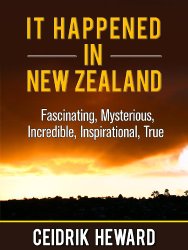The Terra Nova leaving port for her trip to the South Pole:
https://www.youtube.com/watch?v=RR8aNabrWL8
“Dear old Dad and Mother, The end has come. Death has no terrors for me.—-we have struggled against very heavy odds to the bitter end. Two of the five of us are already dead and we three are nearly done up.” Edward Wilson scrawled these words across water stained paper on the 22nd March 1912 in a final letter to his parents. Edward Atkinson discovered the letter nine months later in the tent Wilson and his remaining team perished in – thus ended the heroic attempt by Scott and his men to reach the South Pole in 1912.
Wilson was Chief Scientific Officer, responsible for the scientific work on the Terra Nova expedition led by Robert Falcon Scott. He was closer to Scott than any other member of the expedition and during the voyage from Britain, and almost to the end of their ill fated enterprise, he kept a detailed record of daily activities.
 Edward Wilson (westbournehistory.com)
Edward Wilson (westbournehistory.com)
The words Edward recorded back on 29th November 1910 conveyed a completely different mood. That Tuesday was a calm, warm sunny day for the Terra Nova’s departure from Port Chalmers for Antarctica. “Dunedin had been given a special holiday to see us off at 2.30pm. We were boisterously and very cheerily seen off and Ory (his wife) was with us onboard to the last when she had to go off on the tug, and there on the bridge, I saw her disappear out of sight waving happily, a goodbye that will be with me till the day I see her again in this world, or the next.”
The early days of the journey south passed in fine weather, allowing the horses and dogs aboard to adjust more easily to the small ship’s motion. Eleven days after leaving New Zealand, they arrived in pack ice. However, the men onboard knew what to expect.
SCOTT’S GOAL
It was Scott’s second attempt to reach the Pole. Wilson had been with him on that earlier Discovery Expedition. Also with them on that trip was Ernest Shackleton. Even as Captain Scott secretly planned his second visit to the ice, Shackleton was on his way in his own bid to conquer the frozen continent. Again, however, Shackleton failed to reach the South Pole. He turned back 97 miles short of it.
Scott knew he had to act quickly. With rumours circulating around London that the French, Germans and Japanese were all attempting to be the first to reach the Pole, it was relatively easy for Scott to mount another expedition.
HOLLOW VICTORY
Along with Wilson, Scott also chose Henry Bowers, Lawrence Oates and Edgar Evans for the polar party. On this Terra Nova Expedition, these men would finally achieve their objective. For the first time, British feet stood on the South Pole. However, it was a hollow victory.
On Tuesday, 16 January 1912, Wilson wrote, “—lunched then came on a black flag and the Norwegians’ sledge, ski and dog tracks—” The British team had been beaten to their prize by Norway’s explorer, Roald Amundsen.
The disappointment in Scott’s party can only be imagined. As the five men made their way back to their ship, they endured appalling blizzard conditions on the Great Ice Barrier. Their supplies dwindled to nothing. Frostbite gnawed at their bodies as exhaustion overcame them. Only eleven miles from the One Ton Supply Depot, which had been re-stocked for them three weeks earlier, they finally succumbed to their pain and the torturous elements.
The Norwegian, Tryggve Gran, one of those in the party to discover the lost explorers, was the last man to see them before the ill-fated team’s damaged tent was covered for good in a snow memorial. Wilson’s frozen body sat propped up beside those of Captain Scott and Henry Bowers. “Dr. Wilson was sitting in a half reclining position with his back against the inside of the tent facing as we entered. On his features were the traces of a sweet smile and he looked as if he were about to wake from a sound sleep.” the Norwegian noted.
The aim of the Terra Nova Expedition had been achieved at a great cost. In Britain, the death of five of their best explorers was deemed too high a price to pay for reaching the Pole. The nation was still recovering from the loss of its greatest ship and the 1,523 who perished in the cold Atlantic on the Titanic.
This infamous maritime disaster, caused by an iceberg happened only days after the actual deaths of the polar team. 1912 was indeed a black year for Britain, and ‘ice’ must have been a dirty word.
As for the Terra Nova, she was re-purchased by her former owners after returning from Antarctica and sailed for Canada. She operated as a sealing vessel off Newfoundland until she sprung a leak and sank on the 13 September 1943.
The hardy little ship that had played her part in history had been afloat for 59 years.
Ceidrik Heward
Ceidrik Heward is an Amazon TOP SELLING AUTHOR and has lived and worked in 7 countries working as a TV cameraman, director and film tutor. For the past 17 years he has focused on writing and has been published in magazines and newspapers in Europe, USA, Asia and the Middle East.
His interests include photography, psychology and metaphysics. He loves to read and always has at least 3 books on the go. He has written 22 manuals/books and has just completed his 4th short novel. Ceidrik believes sharing information and stories is the best way to stimulate the imagination and enrich our lives.





















 Visit Today : 320
Visit Today : 320 Total Visit : 1133497
Total Visit : 1133497
Speak Your Mind